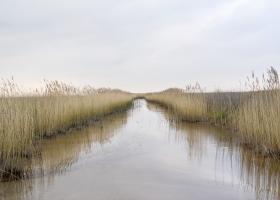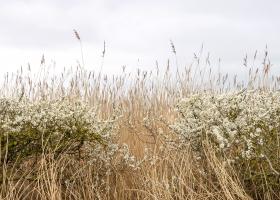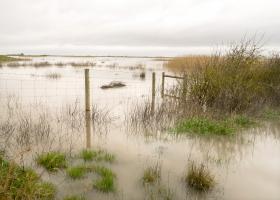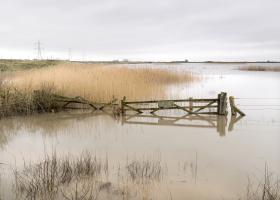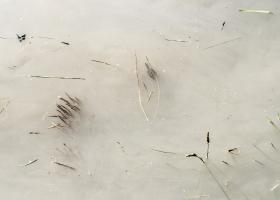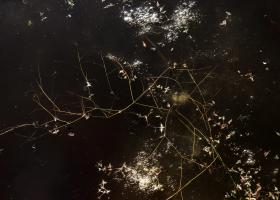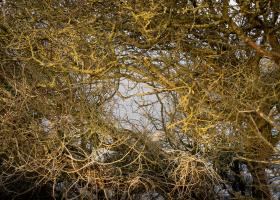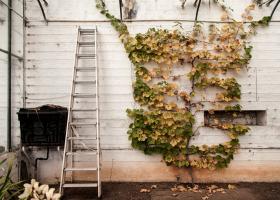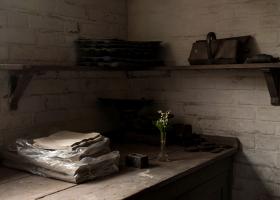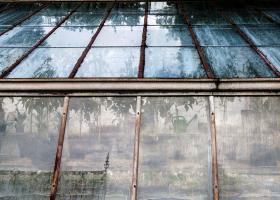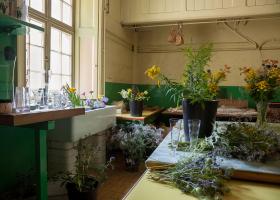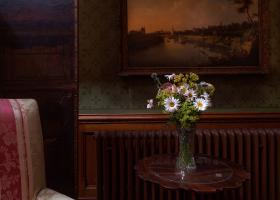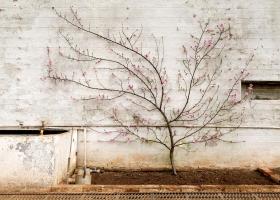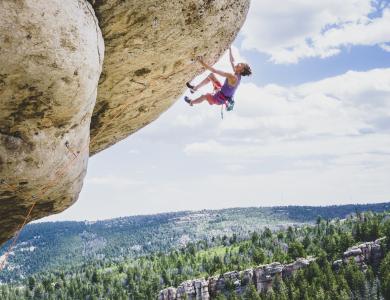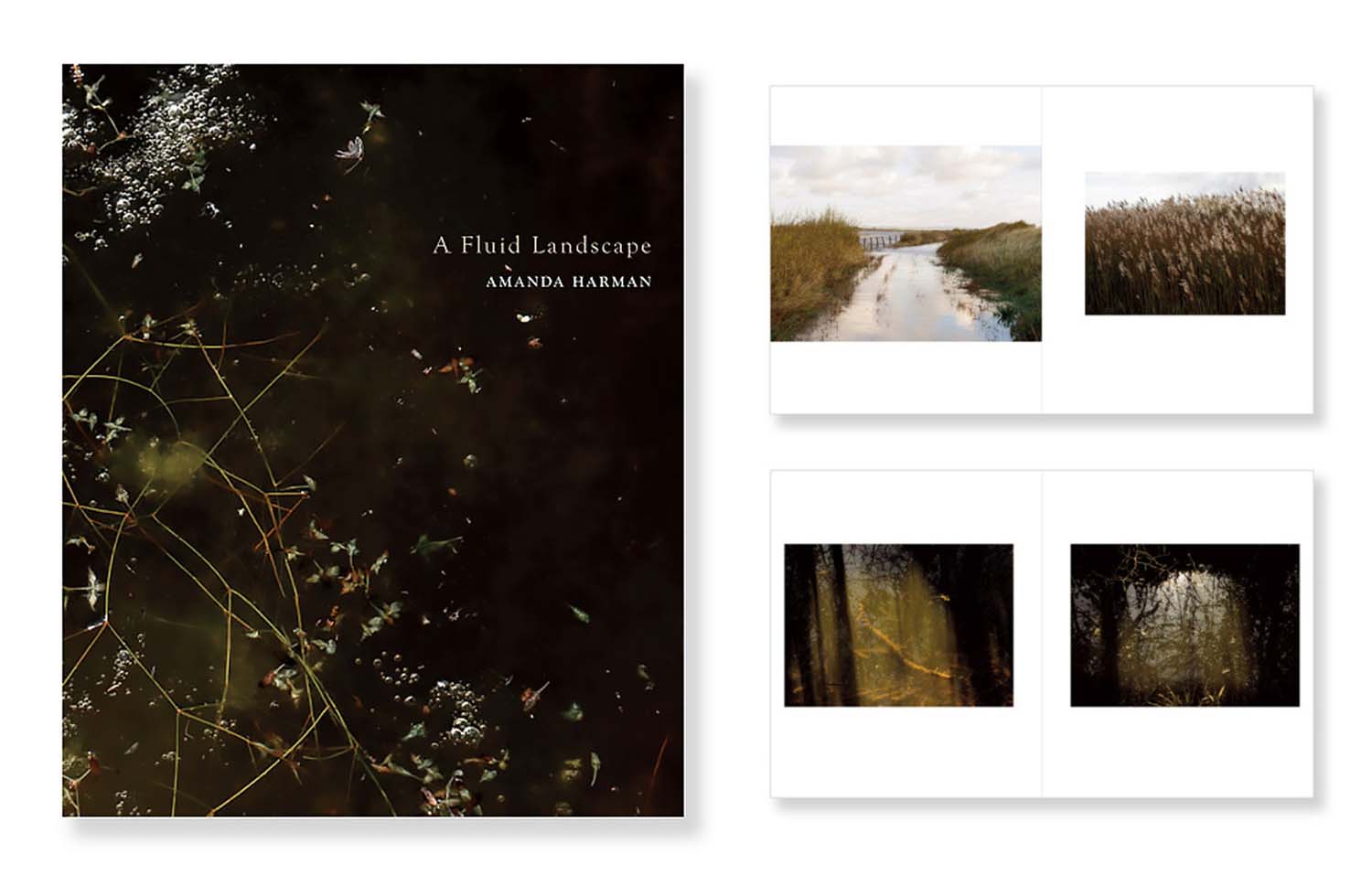
Photographer Amanda Harman is publishing a book called “A Fluid Landscape,” based on a series that was shortlisted in the Landscape category of the 2018 Sony World Photography Awards. By the Christmas of 2017, she had made many trips to the marshes and made many photographs of the landscape. She hadn’t shown the work anywhere but decided to enter a small selection that at the end was awarded.
On the day of the shortlisted announcement, Harman was contacted by Iain Sarjeant at Another Place Press, to say he would be very interested in publishing the project as a book. Since March 2018, she has been working with him on the book, which was launched for pre-orders on 17th September and will be published on the 12th of November. Sarjeant had been following Amanda’s work online for some time, but only became aware of this body of work when it was announced that her series had been shortlisted.
“As soon as I saw the work I knew I would love the opportunity to work with Amanda to publish it as a small book. It is not only a beautiful series of images but it also perfectly fits the themes of Another Place Press – photography which explores our relationship with ‘place’,” Sarjeant says.
In fact, Harman’s photography is deeply connected with nature: “I am interested in our relationship with the land, how it has been consistently bent to our service, how we constantly strive to control it, through farming, industry, horticulture, gardening … and the impact that these interventions have on our understanding of landscape and wilderness.”
In other words, photographing in the landscape is her way of observing and exploring this relationship. Harman focussed on the “unique landscape” at the heart of the Somerset Levels for these series, as it’s directly related to the people who sought to settle the land, by controlling the water levels to benefit from the rich pasture the silty water left behind, and to gain access to the rich seams of peat. In recent years, this land, damaged by drainage, agriculture and intense peat extraction, has through various means been returned to marsh, creating a ‘new’ ancient landscape of water filled rhynes, damp fens, wet fern woodland, salt marsh and open water fringed with reed beds. This was a landscape she “was fascinated to explore and photograph and returned to again and again.”
Her working method is to spend time in an environment and to become attuned to what is there; this can take many visits, moving through what is surface, what is obvious and starting to notice what may not be immediately ‘visible’. This has been true of photographing the glasshouses, the clubhouses and now the marsh landscape.
The weather, the season, the state of the tide all have a big impact on how these landscapes look and feel, on the colours, the light, the amount of vegetation. She started by looking out, across the landscape, but as she returned, again and again, she began to look inwards, at the interior; at plants washed with muddy tidal waters, into drainage ditches buzzing with insect and plant life and through the complex tangles of branches, brambles and reeds that obscured her view at every turn.
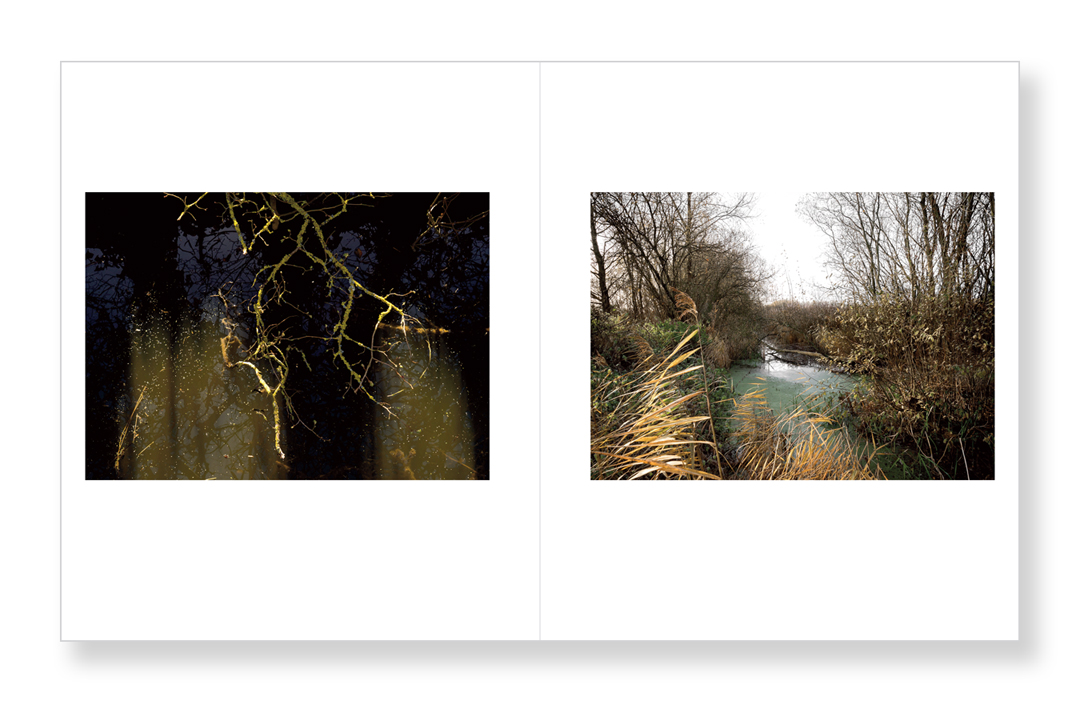
“Certain images from the marshes stick with me, the hawthorn hedge in flower was once a field margin, it is now mingled with a common reed, encroaching from the newly formed reedbeds. Photographed in February last year, I really wanted to make some more images of the reeds and hawthorn this spring. Spring was late, as I drove to work each day, I was looking out for signs that the Hawthorne was about to flower. It was April before the blossom began to break and I headed down to Steart, knowing the place where the hedge and the reeds formed this beautiful, wavelike structure. As I approached the marshes I could see that the hedges had been recently flail cut, there would be no blossom, and the shape of the hedge would be changed forever, reminding me that a photograph is always a moment in time,” she adds.
Harman visited this landscape at a time in her life when loss and uncertainty had become very present. Like many things in life, what starts out in one way becomes something else. At the very beginning of making this work, her mother died. “Losing a parent has a huge impact on your whole life, and at times grief can become overwhelming. Working in this landscape became a quiet place for reflection, I needed the solitude that making the work gave me, solitude, but with a purpose, and my mum was very present to me on those trips.”
Harman has been making photographs for a long time, over 30 years. She started working in black and white, as a student at West Surrey College of Art and Design back in the early 80’s. She was much influenced by the documentary photography of that time and earlier, and worked in that genre for a good few years.
Graduated from a MA in Photography at LCC in the early 2000’s, that’s when she started working in colour and investigating other visual approaches to exploring and questioning the world around me. She tends to make work ‘close to home’ exploring with her camera the everyday or the overlooked, in the places and people around her.
Harman was also a winner of the 2014 Sony World Photography Awards, in the Still Life category with the project ‘Garden Stories.’ She describes her experience and involvement with the awards as a “very positive and beneficial to my development as a photographer, and being shortlisted has generated just as much exposure and interest in my work as being a category winner, if not more! Which goes to show the awards are not just about winning, but about gaining exposure for your work.” In her opinion, photography is about communication, and the Sony World Photography Awards have given her “a great platform to share the work that I make, and the book will be another way to share the work with people and hopefully reach a new audience.”
Harman emphasizes how the Competition is free to enter and how photographers have nothing to lose and perhaps much to gain in term of exposure for your work and connections with other photographers, writers, editor, publishers and more. “We all fear rejection and that we might not be good enough, but if we don’t try we won’t know, it’s worth taking the risk. My involvement with SWPA has done much to develop my confidence as a photographer and a teacher and I have met many inspiring people that I would not have known if not for my involvement in the awards.”

